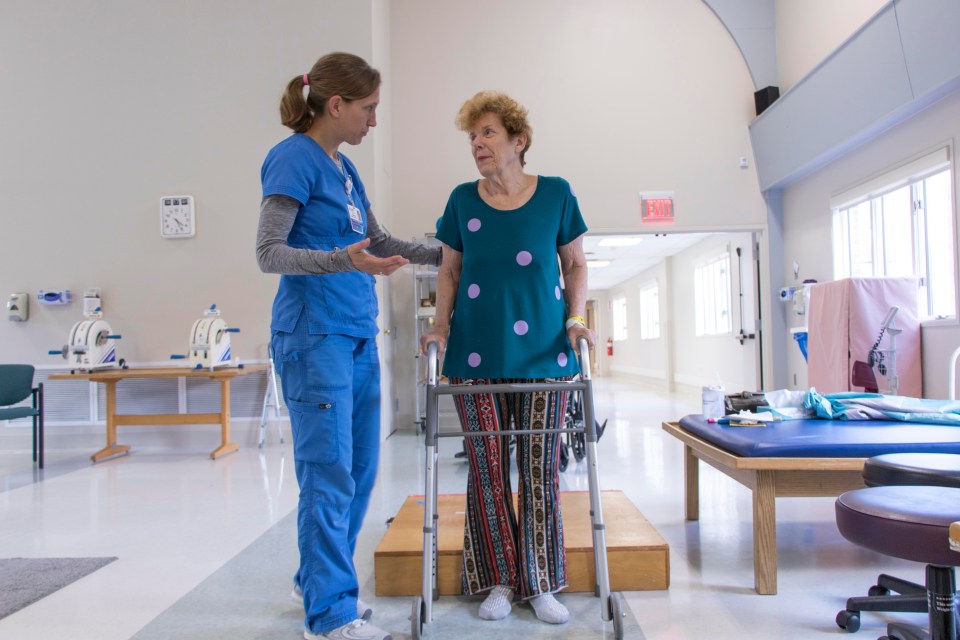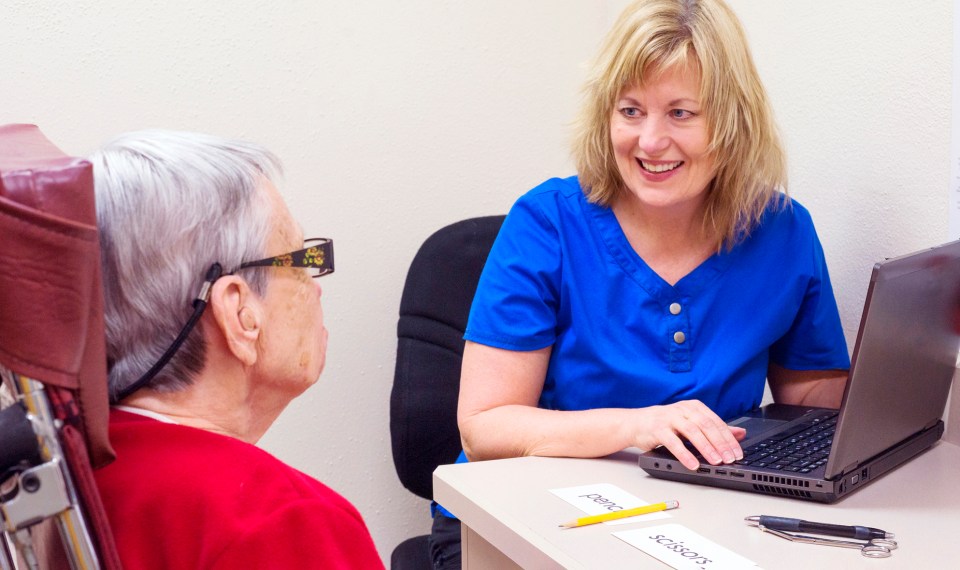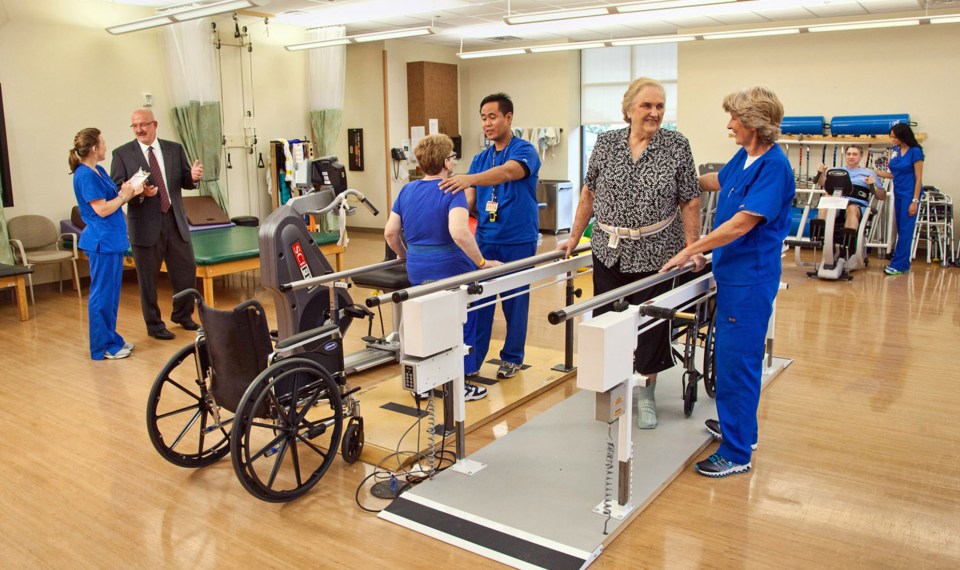Whether a patient is in an inpatient rehabilitation hospital or receiving home health, a key component of their care plan will likely be physical therapy.
They may have different approaches to patient care, but therapists in both settings build robust rehabilitation programs to help people optimize quality of life. Physical therapists work with patients of all ages and needs, using knowledgeable hands-on care to provide a second chance to live independently.
Below, get to know two Encompass Health physical therapists from the inpatient rehabilitation and home health settings, and find out more about why they do what they do.
Lyle White, home health physical therapist
Why did you choose PT in the home health setting?
“I’ve had the opportunity to work in many different healthcare settings but always felt I was only controlling one part of the care equation, rather than treating the whole patient. I love getting to see patients live in their own home with their loved ones and continue experiencing the things that bring them joy, along with all the other personal aspects we see working in home health.

We face new obstacles and challenges every day. I still treat the injury, but I’m also treating so much more by developing relationships with our patients, making sure their medications are correct, and ensuring they’re able to live safely and independently in their home.
I get to be part of an entire team of physicians, nurses, therapists and aides who strive to always provide the best care to our patients.”
What does your typical day look like?
“In addition to treating patients and updating physicians on their patients’ progress, Encompass Health has given me the opportunity to grow in my field and also offered me teaching opportunities.
We see such a wide variety of patients from every walk of life, so I enjoy taking the time to get to know each of them during every visit I perform. I also enjoy coming across a new application of an exercise and adapting it to work in the patient’s home to help them achieve the best possible outcome.”
How do you coordinate with other disciplines to provide high-quality care?
“We have weekly case conference meetings as a branch, which bring all of our different disciplines together. These meetings are a great opportunity for the patient’s entire care team to come together and talk about each patient’s progress.
There are also many informal ways we collaborate. We often communicate between visits and give each other updates so everyone stays on the same page. When we see something going well, or something that’s not producing the outcomes we’d like to see, we work as a coordinated team to advise each other on how best to achieve the patient’s goals.
I love being part of a team like this and being able to learn the specific traits and skills that each clinician and discipline provides.”
What motivates you to come to work?
“My daughter is absolutely what motivates me to come to work. Every day when I get home, she asks, ‘How did you help people today?’ It gives me clarity and perspective on what I do. I’m here to help our patients have the best possible quality of life.”
Heather Barackman, inpatient rehabilitation physical therapist
What does your typical day look like?
“Of my eight hour work day, around six and a half hours are treatment time, typically working with patients, sometimes one-on-one and sometimes in group settings. Some of the treatment time is family teaching—some patients may need a little bit of family assistance when they go home. Sometimes it’s teaching families how to help assist the patient with transfers, or sometimes it can be how to use certain special equipment like a wheelchair or a lift.
Then, we have meetings with the rest of the interdisciplinary team. At least twice a week, we meet with doctors, case managers, nurses and other therapists to establish the best discharge plan for our patients going home.”
How do you collaborate with other therapists?
“I work hand-in-hand throughout the day with my occupational therapy partner. All of the physical therapists have an occupation therapist counterpart and we’re paired with a certain group of patients on our floor. That allows for a little more continuity with the patients during their stay.
We also write schedules for our patients together, balancing their needs. Do they need OT first thing in the morning? What are their priority tasks? We also work with speech therapists for patients who need speech therapy during their stay, and balance those needs as well.
I’m talking at least hourly with my OT partner, I talk to the case manager throughout the day, and try to check in with nurses before and after we see a patient to give them updates and keep that continuity of care. This also allows us to communicate any of our concerns. It’s constant communication.”
How does technology play a role in the treatment plan?
“As a physical therapist, regardless of care setting, you’re focusing on mobility, such as transfers, walking, stairs and using the wheelchair if they’re not walking. In an inpatient rehabilitation hospital, if they’re not walking well, we have parallel bars they can use, or a track in our gym that patients can use with a harness so they can walk without fear of falling. The Biodex works on standing balance. The technology available to inpatient physical therapists is nice, but at the end of the day, it’s all about the mobility.”
The content of this site is for informational purposes only and should not be taken as professional medical advice. Always seek the advice of your physician or other qualified healthcare provider with any questions you may have regarding any medical conditions or treatments.



